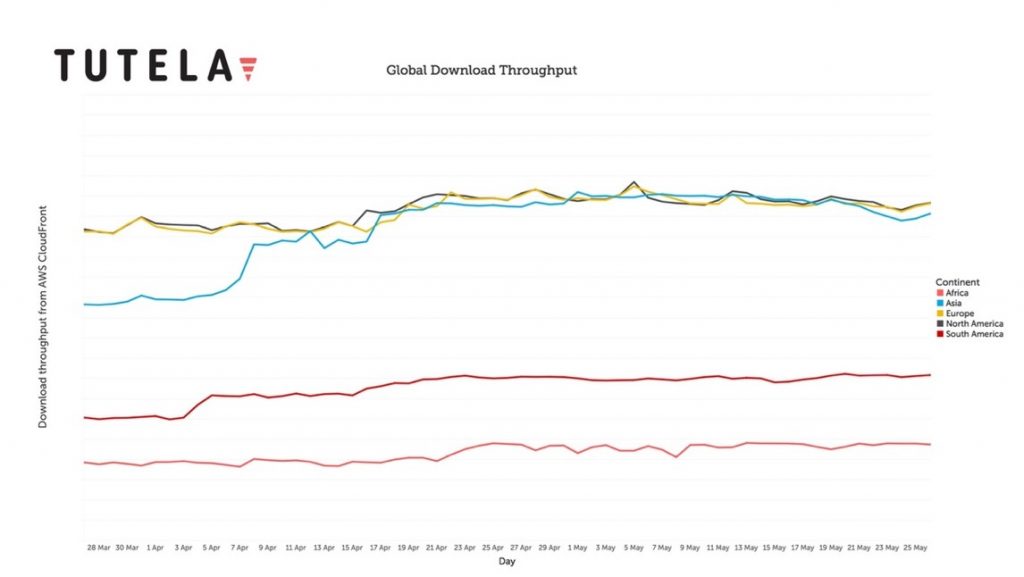July 2019
Last week, AWS publicly announced its recent deployment of the TCP bottleneck bandwidth and round trip (BBR) congestion control algorithm on its CloudFront content delivery network (CDN). The aim of the deployment, which occurred globally in March and April of this year, was to improve latency and throughput for internet traffic, which should in turn improve user experience when trying to access any content stored on CloudFront.
It’s hard to quantify exactly how much of Internet browsing this has impacted, but according to The Verge, AWS has roughly a 40% share of the cloud market, and is known to host a number of popular online sites and services, including Pinterest, Netflix, and Spotify. As such, an improvement to AWS should be felt by the vast majority of internet users.
At Tutela, we run our network tests against a range of popular CDNs, including CloudFront. As a result, when the changes were made we were able to directly observe the result on end-users in our crowdsourced measurements. The impact of BBR shows up even on a continental level, with users in Asia experiencing significant improvements overnight.


Tutela’s primary focus is on wireless networks worldwide, and when breaking down the impact of the change by mobile network operator, an interesting trend emerged. Some operators were virtually unaffected by the change, whilst others saw improvements to download throughput in the order of around 60%.
Amazon says that “performance gains [due to BBR] depend on a number of factors, including the resource size as well as the quality, capacity, and distance of the connectivity in a given last-mile network,” which explains the variance in outcome between operators.
A 60% improvement in download throughput using a 2MB test file does not necessarily translate to a 60% improvement in overall network browsing in all cases. Tutela’s metric of end-user quality of experience, consistent quality, shows a much smaller improvement in the US nationwide results following the BBR deployment. Above a certain threshold, mobile users are unlikely to notice a significant improvement in their mobile experience due to improved download throughput -- after all, streaming an HD video works the same at 10 Mbps or 15 Mbps. However, in areas where connection speeds have historically been slower than the average, improved congestion management likely provides a noticeable improvement.
When we talk about improving the world’s mobile internet, we often focus on what operators can do in isolation to improve their own infrastructure, particularly the radio access network. However, the internet stretches far beyond that, and users’ ultimate quality of experience is end-to-end, rather than just in the first mile.
Changes like CloudFront’s BBR rollout highlight how developments in other parts of the network can have a real and measurable impact on how end-users perceive their quality of experience. This event demonstrates why measuring end-to-end network performance is a vital component of ensuring customer quality of experience; it can also be instructive for operators seeking to maximize investment in network quality.
